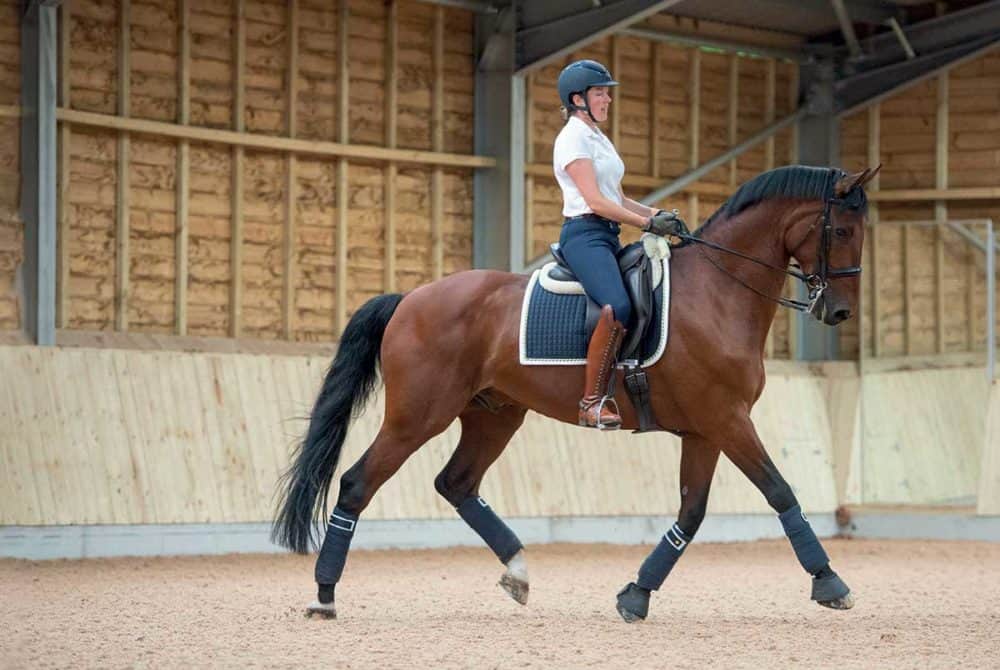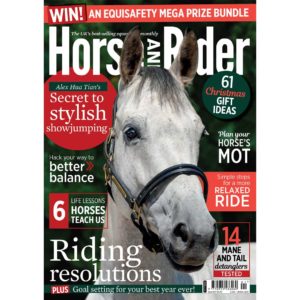Cut through your horse’s tension with Anna Miller
Posted 30th November 2021
Is your horse always on red alert and quick to spook? Learn how to ease tension with Anna Miller

Riding a horse who jumps at his own shadow poses a unique set of challenges for any rider. It can make your dressage training a lot more troublesome because the extra tension will have a jarring effect on his rhythm and disrupt the movement you were riding. It also means he’ll struggle to relax and truly let go enough to show off his paces, costing you valuable marks.
However, there are lots of ways you can train your spooky horse to encourage him to relax and take things in his stride. I’m here to help solve the problems you may face as a result of tension, so you can get the best out of him between the boards.
What is tension?
When a judge writes the dreaded phrase ‘tense’ on your score sheet, it usually refers to stiffness, a lack of relaxation, choppy paces and over-reaction to your aids or scary objects around the arena.
Tension usually manifests itself in a horse’s frame, so it’s important to understand why your horse is feeling tense – is it due to his fitness, the fit of his tack, or his confidence level? As long as you can rule out any physical causes, you can begin to school him with a focus on relaxation.
The most important aspect to establish is a relationship of trust between you, which takes time, patience and understanding.
Self reflection
Horses are prey animals, so have a very powerful flight response that can be easily triggered. Your horse will look to you for confidence and direction, so if you’re feeling tense and uptight it’s likely he will, too. Signs you’re holding onto tension in the saddle include…
- tightly gripping the reins
- tension in your seat, causing you to bounce in the saddle
- locked hips
- a clenched jaw
Keeping your nerves under control is one of the main steps towards helping your horse feel more relaxed. When you’re riding, think about deflating your body – you want to have poise without stiffness. Concentrate on the exercise you’re riding and focus your gaze to draw your horse forward – your eye line is much more powerful than you think – so don’t forget to look where you’re going.
Keep breathing
Breathing is often neglected, and it’s harder to control your breaths when you’re riding a spooking horse. Our horses mirror us and vice versa, so try to breathe deeply and slowly from your diaphragm to help put your horse at ease. Learn to control your breathing on the ground first – meditation and yoga can be really helpful to help you practise.
Top Tip
Try to create a system so everything you do at a show is the same as what you do at home. That way, he’ll feel more reassured and comfortable in an unfamiliar environment.
Pick up your copy of January Horse&Rider, on sale 2 December 2021, to continue with Anna Miller’s advice on cutting through your horse’s tension











